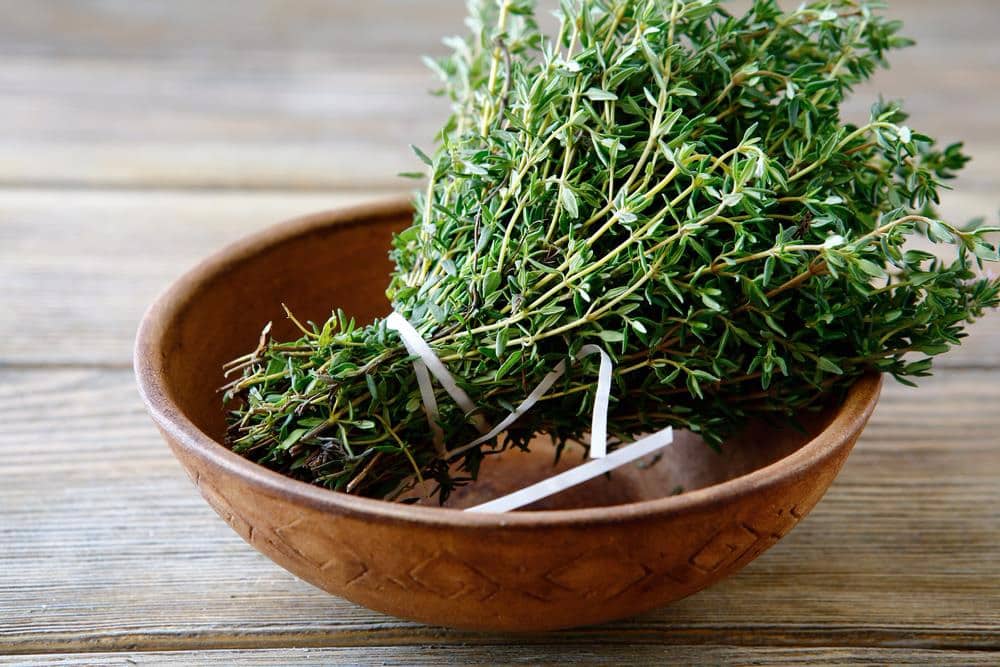Thyme, often found nestled among the spices in your kitchen, is much more than just a culinary companion. This unassuming herb boasts a rich tapestry of history that stretches back through centuries, marking its place as a timeless staple in various cultures around the globe. Known for its versatility, thyme has been cherished not only for its flavor but also for its medicinal and symbolic significance across different eras.
In this blog, we embark on a fascinating journey through time to uncover thyme’s historical roots and its enduring legacy. From the ancient Egyptians who harnessed its antiseptic properties, to the Greeks who revered it as a symbol of courage, thyme’s story is one of intrigue and reverence. We’ll explore its pivotal role in traditional medicine and its cultural significance, as well as its evolution in culinary practices over the years.
So, as you read on, consider this: Did you know this humble herb has been a staple throughout human history? Join us as we delve into the legendary journey of thyme and discover why it continues to hold a cherished spot in our lives today.
Thyme in Ancient Civilizations
Early Uses in Egypt
In the annals of ancient Egyptian civilization, thyme held a distinguished place, revered for its potent antiseptic properties and its role in the sacred process of embalming. Egyptians, known for their intricate and spiritual mummification rituals, sought to preserve the physical forms of their deceased with meticulous care, ensuring that the soul could safely journey to the afterlife.
Thyme was integral to these practices due to its natural preservative qualities. It was often used in the embalming process to thwart decay, owing to its ability to inhibit bacterial growth. Its aromatic essence also served to mask odors, adding a layer of sanctity to the rituals. The herb’s inclusion in these rites underscores its valued status, reflecting a profound understanding of its preservative capabilities long before the advent of modern science.
Beyond its practical applications, thyme was symbolically significant, embodying purification and protection. By incorporating thyme into embalming, the Egyptians not only preserved bodies but also paid homage to the spiritual purity and protection it was believed to confer.
Through this dual role, thyme became an emblem of ancient Egyptian ingenuity and spirituality, demonstrating their sophisticated use of natural resources to achieve both practical and ceremonial goals.
In summary, thyme’s role in ancient Egyptian embalming practices highlights its esteemed position as both a practical tool and a spiritual symbol, underlining its importance in one of history’s most fascinating cultures.
Thyme in Greek and Roman Culture
In the rich tapestry of Greek mythology, thyme emerges as a symbol of courage and bravery. This association with valor is rooted in ancient tales where warriors and heroes were often depicted amid fields of thyme, believed to bestow strength and fortitude.
The Greeks held thyme in high esteem, considering it a source of inspiration and vigor. The very word “thyme” is thought to derive from the Greek word “thumus,” which means courage, underscoring its deep-seated connection to heroic virtues. Beyond its symbolic significance, thyme was frequently burned as incense in temples, offering purification and promoting spiritual well-being.
The Romans, inheriting these cultural ties, expanded thyme’s role, incorporating it extensively into their daily lives. Thyme became a staple in Roman culinary practices, celebrated for its ability to enhance the flavor of meats, stews, and sauces. Its aromatic qualities made it a favorite among Roman gourmands, who prized it not only for its taste but also for its ability to preserve food, much like the Egyptians before them.
Medicinally, the Romans recognized thyme’s antiseptic and therapeutic properties. It was commonly used in baths and as a remedy for respiratory ailments, reflecting a sophisticated understanding of its health benefits. Roman soldiers would often bathe in water infused with thyme to invigorate their spirits before battle, reinforcing the herb’s association with courage and vitality.
In both Greek and Roman cultures, thyme was more than just a plant; it was a symbol of strength, a culinary delight, and a medicinal ally. Its enduring legacy in these ancient civilizations highlights its multifaceted significance, echoing through history as a testament to its remarkable versatility and enduring appeal.
Thyme in Traditional Medicine
Medieval Europe and Herbal Medicine
In the tapestry of medieval Europe, thyme emerged as a cornerstone of herbal medicine, appreciated for its potent antiseptic and healing properties. During this era, when scientific understanding was in its nascent stages, natural remedies were the primary recourse for ailments, and thyme was a trusted ally in the apothecary’s arsenal.
Thyme’s antiseptic qualities were particularly valued in treating wounds and preventing infections, a critical need in a time when battlefield injuries and epidemics were prevalent. Herbalists and apothecaries often infused thyme into salves and poultices, applying them directly to cuts and abrasions to promote healing and ward off bacteria.
Furthermore, thyme was brewed into teas and tinctures to treat respiratory conditions, harnessing its ability to soothe coughs and clear congestion.
The herb’s significance is well-documented in medieval herbal manuscripts, which served as medical textbooks for practitioners of the time. These manuscripts meticulously cataloged thyme’s uses, alongside other herbs, in treating a variety of health issues, emphasizing its role in maintaining wellness.
The inclusion of thyme in these texts highlights the medieval reliance on nature’s pharmacy and the transmission of herbal knowledge across generations.
Apothecaries, the pharmacists of the medieval world, relied heavily on thyme as part of their practice. They crafted remedies combining thyme with other herbs to address specific conditions, tailoring treatments to the needs of their communities. This practice not only underscores thyme’s versatility but also its integral role in the development of early European herbal medicine.
Through its widespread use and documentation, thyme became emblematic of the medieval approach to health and healing, bridging the gap between ancient traditions and the burgeoning field of herbal medicine. Its enduring presence in both written records and oral traditions speaks to its efficacy and the trust placed in this humble yet powerful herb.
Thyme in Folk Remedies
Throughout history, thyme has woven itself into the tapestry of folk medicine across diverse cultures, revered for its healing abilities and cultural significance. From the rolling hills of Europe to the vibrant landscapes of Africa, this versatile herb has been a trusted remedy for countless generations.
In Mediterranean folklore, thyme was often used as a remedy for respiratory ailments. A simple infusion of thyme leaves was believed to clear congestion and soothe sore throats, a practice still cherished in many households today. Across the Channel in England, thyme was a staple in the “posy ring,” a small bouquet worn during plague times for its perceived power to ward off disease-bearing spirits.
Venturing into Eastern Europe, thyme took on a mystical role, with folklore attributing it the ability to ward off nightmares. People would place thyme sprigs under their pillows to ensure a restful sleep, free from disturbing dreams. This practice highlights the herb’s cultural resonance beyond its medicinal uses, embedding it in the spiritual fabric of daily life.
In North African traditions, thyme was often used for its antiseptic properties, applied in poultices to treat skin infections and wounds. Its robust aroma and antimicrobial qualities made it a staple in traditional healing practices, showcasing its adaptability and effectiveness.
The diverse applications of thyme in folk remedies reflect its universal appeal and the ingenuity of traditional medicine. From soothing teas to protective amulets, thyme’s journey through cultural traditions underscores its lasting impact on health and wellness.
As you explore these folkloric uses of thyme, we invite you to join the conversation. Do you have any traditional thyme remedies passed down through your family? Share your stories and experiences in the comments below, and let’s celebrate the rich heritage of this legendary herb together.
Cultural Significance of Thyme
Symbolism in Literature and Art
Thyme has long captivated the imagination of artists and writers, finding its way into literature and art as a symbol of various virtues and emotions. Its multifaceted symbolism ranges from courage and bravery to love and devotion, reflecting its deep-rooted significance across cultures and eras.
In literature, thyme often emerges as a motif of bravery and vitality. One notable example is its appearance in the works of Shakespeare, where it is associated with courage. In “A Midsummer Night’s Dream,” thyme grows near the bed of Titania, the fairy queen, suggesting a setting of strength and enchantment. This association underscores the belief in thyme’s power to embolden and protect, a theme that resonates with audiences across generations.
Artistic representations of thyme also carry rich symbolic meanings. In medieval and Renaissance paintings, thyme often appears in the form of garlands or posies, intertwined with other herbs, symbolizing love and fidelity. These artistic depictions served not only as decorative elements but also as visual narratives that conveyed deeper themes of loyalty and affection, often linked to the romantic ideals of the period.
Beyond Western traditions, thyme’s symbolism extends to various cultures where it is seen as a token of love and remembrance. In folklore, gifting thyme was an expression of affection, a gesture that transcended mere words to convey heartfelt sentiments. This enduring symbolism highlights thyme’s ability to bridge the emotional and the tangible, making it a cherished element in both personal and communal expressions.
The presence of thyme in literature and art reflects its cultural resonance and the timeless themes it embodies. As you reflect on these symbolic uses, consider how this humble herb continues to inspire and connect us through the creative expressions of writers and artists. Whether through the written word or the canvas, thyme’s legacy as a symbol of bravery and love persists, inviting us to explore its layers of meaning and its place in the tapestry of human experience.
Rituals and Traditions
Thyme’s journey through history is deeply intertwined with rituals and traditions, where it has been cherished not only for its aromatic qualities but also for its spiritual significance. Across different cultures, thyme has been a steadfast companion in sacred practices, symbolizing purification and spiritual connection.
In ancient Greece, thyme was often burned as incense in temples, used to purify the space and invite divine presence. The fragrant smoke was believed to carry prayers to the heavens, acting as a bridge between the earthly and the divine. This practice highlights thyme’s esteemed place in Greek religious ceremonies, where it was seen as a conduit for spiritual communication.
Similarly, in the Roman world, thyme was a key component in religious rituals and ceremonies, often woven into garlands and placed on altars as offerings to the gods. The Romans believed that thyme brought courage and clarity, making it a fitting tribute in ceremonies that sought divine favor or protection. Its use in these rituals underscores its cultural resonance as a symbol of strength and purity.
In medieval Europe, thyme’s role extended into Christian traditions, where it was used during holy ceremonies and processions. It was believed to ward off evil spirits and sanctify the surroundings, embodying the virtues of protection and holiness. This association with spiritual purity made thyme a popular choice for use in incense and holy water, enhancing the sacred atmosphere of religious gatherings.
Across different continents, thyme’s significance remains, with African and Middle Eastern cultures incorporating it into spiritual practices. In these regions, thyme is sometimes used in purification rituals, where its smoke is believed to cleanse both the body and spirit, promoting health and spiritual well-being.
The enduring use of thyme in rituals and traditions speaks to its deep-rooted symbolism and the universal human desire for connection to the sacred. As a symbol of purification and spirituality, thyme continues to be a beloved element in ceremonies that transcend time and geography, reminding us of the timeless quest for spiritual harmony and balance.

Thyme in Culinary Evolution
Historical Culinary Uses
Thyme has long been a cherished ingredient in culinary traditions, weaving its way through the kitchens of history from ancient times to today. Its journey showcases not only its versatility but also its enduring appeal in enhancing flavors and preserving food.
In ancient Egypt, thyme was a staple in the embalming process, but it also found its place in the kitchen. Egyptians used thyme to flavor their bread and meat dishes, appreciating its aromatic qualities and subtle yet distinct taste.
The Greeks, renowned for their culinary innovations, incorporated thyme into their cooking not just for taste but also for its preservative properties. They would generously sprinkle thyme over roasted meats and fish, using it to stave off spoilage and add a fragrant touch to their feasts.
The Romans further elevated thyme’s status in the culinary world. It became a favored herb in their vast repertoire of recipes, often paired with its cousin, oregano.
Roman cooks used thyme to enhance the flavors of cheese and wine, and it was a key ingredient in garum, a popular fermented fish sauce that was a staple in Roman cuisine. Thyme’s robust flavor stood up well to the bold tastes of Roman dishes, making it indispensable in their culinary practices.
As thyme traveled through the Middle Ages, it continued to play a central role in European kitchens. Monasteries, known for their herb gardens, cultivated thyme not only for medicinal purposes but also for culinary uses.
Medieval cooks used thyme in pottages and stews, appreciating its ability to complement the hearty and rich flavors typical of the era’s dishes. It was also a popular addition to the stuffing of meats, lending its aromatic profile to festive and everyday meals alike.
Transitioning into the Renaissance, thyme maintained its allure, finding its way into the burgeoning world of haute cuisine. It graced the tables of nobility in savory pies and elaborate meat preparations, becoming a symbol of refined taste and culinary sophistication.
Even as culinary tastes evolved, thyme remained a constant favorite, adapting to new dishes and culinary techniques. Its ability to blend seamlessly with other herbs and spices makes it an enduring presence in kitchens around the world today, from rustic home-cooked meals to gourmet restaurant creations.
Thyme’s historical culinary uses highlight its timeless nature and versatility. Whether as a key ingredient in ancient feasts or a favored herb in modern recipes, thyme’s journey through culinary history is a testament to its enduring appeal and indispensable role in enhancing flavors across the ages.
Modern Culinary Trends
In today’s culinary landscape, thyme has experienced a remarkable resurgence, becoming a beloved staple in both home kitchens and gourmet restaurants alike. Its versatility and unique flavor profile make it a perfect addition to a wide array of dishes, from casual weekday dinners to sophisticated gourmet creations.
One of thyme’s standout qualities is its ability to complement other ingredients, making it a favorite among contemporary chefs. In modern cooking, thyme is often used to infuse oils and vinegars, adding a subtle yet aromatic note to dressings and marinades. Its earthy taste pairs well with both meat and vegetarian dishes, enhancing everything from roasted chicken and beef stews to grilled vegetables and hearty soups.
In the world of gourmet trends, thyme has found a special place in the crafting of artisanal products. It’s frequently used in the making of flavored salts and butters, offering a chic twist on traditional condiments. Thyme’s robust flavor also shines in unique desserts, such as thyme-infused honey cakes or lemon-thyme sorbet, where it adds an unexpected depth and complexity.
The resurgence of farm-to-table dining has further propelled thyme into the spotlight. Chefs are increasingly drawn to fresh, locally-sourced herbs, and thyme’s aromatic presence is often highlighted in menus that celebrate seasonal ingredients.
Its role in contemporary cuisine is also seen in the rise of Mediterranean-inspired dishes, where thyme’s Mediterranean roots are showcased in recipes like herb-crusted lamb or tomato-thyme bruschetta.
Beyond restaurants, home cooks have embraced thyme as a pantry essential. Its adaptability allows for creative experimentation, such as incorporating it into homemade bread or using it to season roasted nuts for a flavorful snack. The herb’s ability to elevate simple dishes has made it a go-to for adding a touch of sophistication to everyday meals.
Now, we’d love to hear from you! Do you have a favorite recipe where thyme steals the show? Whether it’s a cherished family dish or a new culinary experiment, share your thyme-infused creations in the comments. Let’s swap ideas and celebrate the culinary magic of this timeless herb together. ????????

Conclusion
As we draw this exploration of thyme to a close, it’s clear that this humble herb has woven a remarkable tale through the ages. From the ancient Egyptians who utilized it for both culinary and embalming purposes, to its revered place in Greek and Roman rituals, thyme has been a steadfast presence in human history.
Its journey through folk remedies showcased its healing prowess, while its symbolic roles in literature and art painted a picture of bravery, love, and spirituality.
In the realm of culinary evolution, thyme has consistently proven its worth. It has graced the tables of medieval banquets, added depth to Renaissance feasts, and now finds itself a favorite in modern kitchens, celebrated for its ability to elevate both simple and complex dishes. Its versatility shines in contemporary cooking trends, bridging the gap between traditional and innovative culinary practices.
Today, thyme continues to captivate us with its distinct aroma and flavor. It remains a cherished ingredient, not just in our kitchens, but also in wellness practices where its reputed health benefits are rediscovered and cherished. Whether infused in oils for relaxation or sprinkled over a favorite dish, thyme’s enduring appeal lies in its ability to adapt and remain relevant, no matter the era or context.
As we reflect on thyme’s incredible journey, we invite you, our readers, to explore the possibilities this legendary herb offers. Whether you’re cooking up a storm or seeking a natural remedy, thyme beckons with its timeless qualities.
Share your own experiences and favorite uses of thyme in the comments below. Let’s continue this conversation and celebrate the rich legacy of thyme together, embracing its role in our contemporary lives and future culinary adventures. ????✨
























